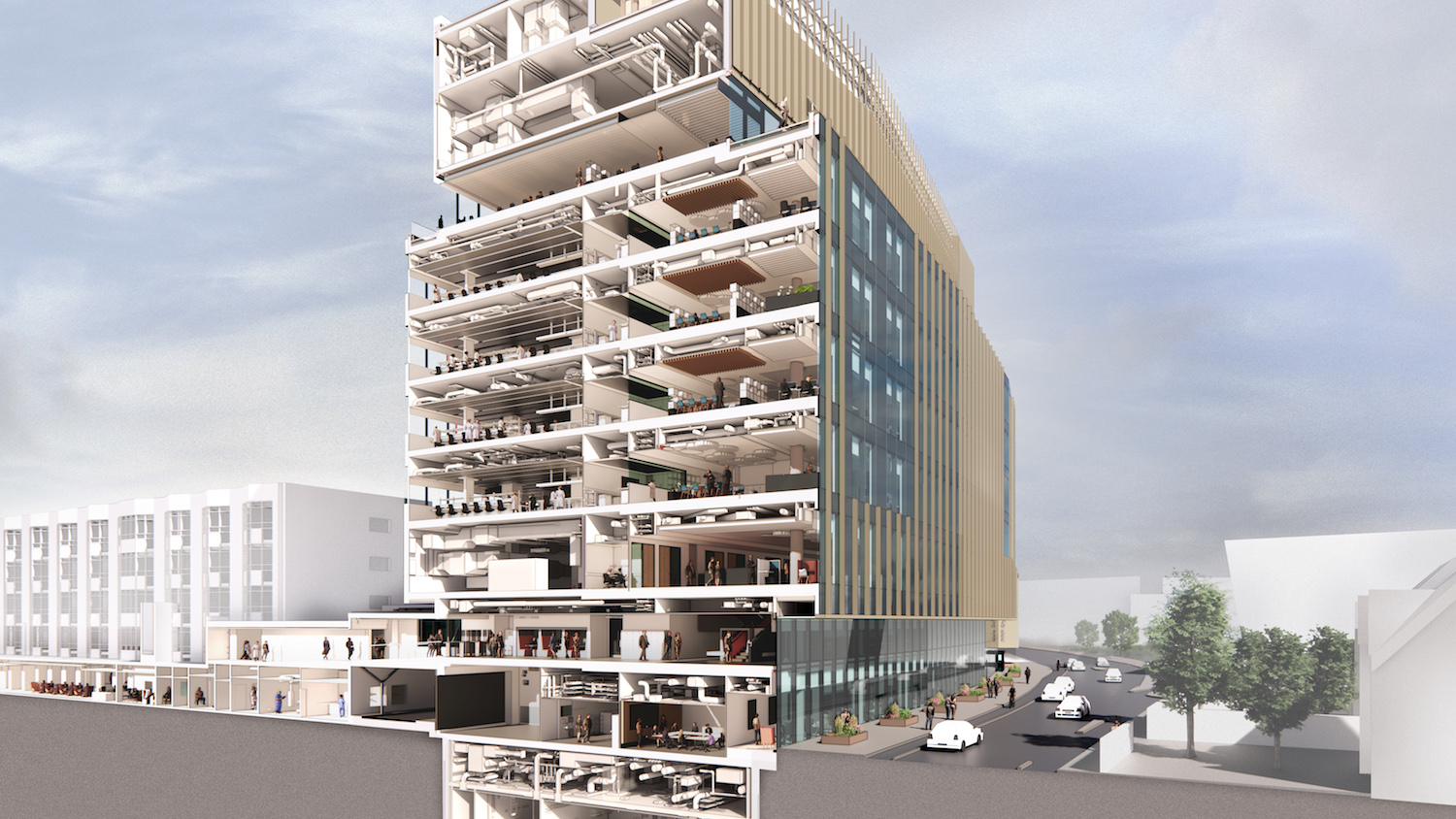
Collaboration and adaptability were key for the Arup and BDP teams working on the new cancer research facility, the Paterson, at The Christie in Manchester, as Will House of Arup explains.
Digital tools and BIM standards are changing at a rapid pace and this trend is showing no signs of abating. To truly take advantage of these technologies, it is vital that teams are willing to work collaboratively and flexibly across sectors and expertise. By adopting this mindset, all team members can benefit from the digital delivery of projects using BIM throughout the development of designs – from concept, through to detailed design, and into construction and handover.
The Paterson Redevelopment Project (the Paterson) demonstrates these capabilities in action, offering lessons for future projects. The delivery of this £150m cancer research facility at The Christie in Manchester is a social infrastructure project of national and international significance, providing the largest cancer treatment and research campus in Europe.

“The Paterson project had collaboration at its core. Arup and BDP Architecture collaborated throughout the detailed design stages, construction and handover.”
Collaboration is key
The Paterson project had collaboration at its core. It needed to design a new building, following a devastating fire that destroyed the original. Crucially, it also needed to meet the current and future needs of the three separate client organisations: the Christie NHS Foundation Trust, the University of Manchester and Cancer Research UK. Each of these organisations is a leader in its respective field, but sought to come together under one umbrella with the aim to establish a cutting-edge facility that would drive world-class advancements in cancer research.
To realise this aspiration, a collaborative mindset had to extend to the project’s design team. Arup and BDP Architecture worked together from the outset, initially leading extensive stakeholder workshops, and then continuing to collaborate throughout the detailed design stages, construction and handover.
The use of digital innovation and BIM further enhanced excellence of delivery by improving design and programme certainty. Arup, BDP and the wider project team had experienced, and suitably qualified, digital and BIM experts on hand to rapidly develop the concept through virtual design. Importantly, these respective BIM leads organised regular collaboration workshops, which alternated with the usual design team meetings, to further embed the values of digital collaboration into the project.
Visualisation drives decision-making
The team used BIM collaboration technology and native model authoring tools, such as Revit and supporting cloud collaboration tools, to visualise the many detailed interfaces throughout the building. This enabled rapid decision-making and implementation, given the presence of designers alongside modellers who could make suitably considered changes on the fly. As a result, only the more challenging coordination items were carried over to the wider design team meetings later each week. Or they were quickly followed up post-BIM-meeting with sketches, figures and interim model releases to enable continued model development.
“Virtual meetings arguably accelerated the pace of collaboration, permanently changing the way Arup collaborates with all stakeholders.”
Through RIBA Work Stages 1 and 2, the (planned) early integration of the Arup structural analysis model into the corresponding documentation (Revit) model ensured the designs were aligned from the outset. In parallel, BDP and Arup MEP developed their respective models, which, when federated together, ensured that the highly constrained and technically packed site was also fully coordinated from the outset. This collaboration led to both time and cost savings by minimising design changes and abortive construction works.
Adaptable ways of working
The Paterson’s development took place during the global Covid-19 pandemic, which posed a significant risk to its progress. However, with an established project culture and adaptable mindset, the team ensured weekly BIM and design team meetings were not interrupted, with the use of Teams and other virtual engagement tools rapidly embedded.
In fact, the use of virtual meetings arguably accelerated the pace of collaboration, permanently changing the way Arup collaborates with all stakeholders. It gives the design team much greater ability to host short coordination calls, while screen sharing resolves issues with relative immediacy. This is in stark contrast to how the industry used to work, a mere five years or so ago.
Reflections for the future
As the Paterson shows, project delivery using BIM methodologies is possible only when teams collaborate and adapt to rapidly shifting circumstances. We must not lose sight of the fact that one of the 2011 Government Construction Strategy aims sought to “replace adversarial cultures with collaborative ones”. It has taken too long for our industry to develop maturity through use of BIM in response.
In tandem, clients are now more aware of the need to define data and digital delivery requirements at the start of projects. Increasingly, they are demanding design and construction be underpinned by BIM standards and methodologies to achieve better results.
While we should applaud this progress, clients and consultants must continue to mobilise suitably knowledgeable BIM experts at the earliest opportunity, to realise suitably considered BIM protocol, methods and procedures. Doing so will enable the development of the collaborative culture that will be key to success.
Will House is an associate at Arup.
Don’t miss out on BIM and digital construction news: sign up to receive the BIMplus newsletter.











